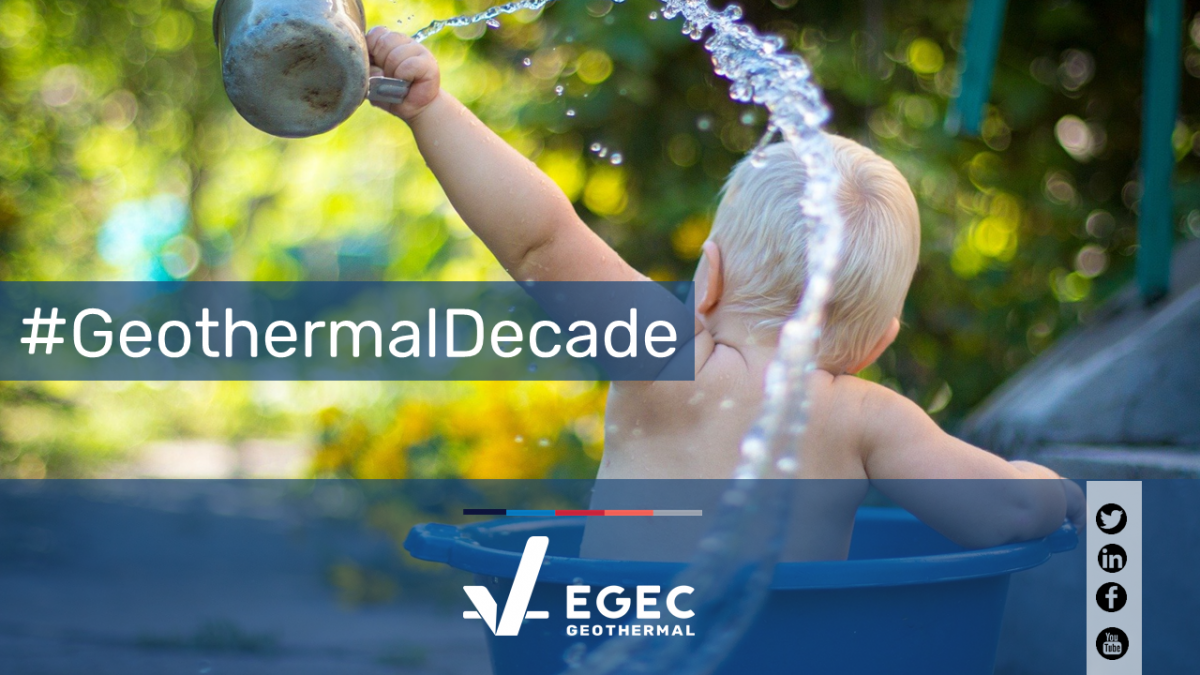Geothermal energy is a clean and inexhaustible energy available 24 hours a day, every day, everywhere. But do you know how much it can contribute to the decarbonisation of the European economy?
Geothermal energy can be used for heating, cooling, hot water and electricity for countless uses. It provides a renewable energy source for buildings, industrial processes and agriculture, supports local development and is at the heart of the first European clean value chain for batteries in electric vehicles.
Geothermal technologies have been around since the beginning of 1900s, but the last six years have witnessed an extraordinary growth. By 2030 the sector will be 13 times bigger.
With so many different applications and a vast untapped potential, geothermal energy is bound to become the bedrock of energy transition.
This will be the #GeothermalDecade.
Follow the hashtag on social media to know more about geothermal’s potential!

Geothermal power plants can produce lithium as a by-product, which is an essential raw material for the electric revolution of the transport sector. Lithium-rich brine is pumped to the surface from geothermal reservoirs, while the heat carried by the brine is used to produce renewable energy.
Geothermal energy can create the first European electro-mobility value chain – from zero-carbon footprint lithium extraction, to processing, battery manufacturing and e-vehicle assembly. Geothermal lithium projects could supply the total demand for lithium in Europe, greatly reducing the dependency on polluting lithium imported from other continents.
Read the article on Time to invest in clean geothermal lithium made in Europe to have a better understanding of the subject.
Heating is by far the largest form of energy used in industrial processes. Currently the vast majority of industrial heat comes from fossil fuels. Switching to renewables would dramatically slash emissions in this sector.
Geothermal heat can provide a continuous energy supply with many temperature levels, at different loads and capacity, at low operational cost. This makes it particularly suitable for a vast range of industrial processes that require different temperatures for production.
Geothermal energy can satisfy the energy needs (and cut the emissions) of key sectors such as aluminium, paper and pulp, cement and chemicals.
Geothermal energy has been used extensively in the agricultural industry for the last three decades. In general, it is used in four types of direct applications: greenhouse heating; aquaculture (fish farming and algae production); agro-industrial processes; soil heating for plant root.
Traditionally the agriculture and food sector relies on fossil fuels, which represent a big chunk of its emissions, and fluctuating energy prices expose the industry to risk. So the sector has the urgent challenge to decarbonise its energy sources.
Geothermal energy is a stable, low cost and local renewable solution to reduce the impact on climate change. Much of the energy used by agriculture is for low and medium level heat (less than 200°C), which matches perfectly with geothermal characteristics.
Read the article on geothermal is the answer for decarbonising agriculture to know more about the topic.
Geothermal energy can also boost tourism and create cultural activities. A clear example is the Tuscany Region in Italy. This is the place where the first geothermal energy plant in the world has been founded, so geothermal energy is now part of the identity of the region.
Here private stakeholders and public authorities joined forces to create a Geothermal museum (in Larderello) and a trekking route to visit the geothermal area. Every year thousands of tourists go to this piece of Tuscany just to discover the wonders of geothermal energy.
Read the article on geothermal destinations in Europe you need to visit.
